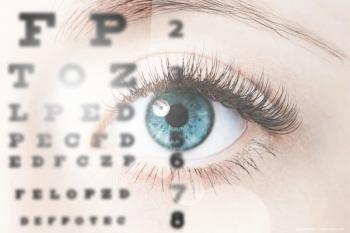
Editor's Blog: Posters more than piece of paper
As part of Ophthalmology Times’ coverage of the 2014 meeting of the Association for Research in Vision and Ophthalmology, Group Content Director Mark L. Dlugoss writes this blog with his observations of the meeting.
As part of Ophthalmology Times’ coverage of the 2014 meeting of the Association for Research in Vision and Ophthalmology, Group Content Director Mark L. Dlugoss writes this blog with his observations of the meeting.
Orlando-The digital world is always moving into our lives in some form and fashion. So it should not surprise anyone that the traditional poster sessions at the Association for Research in Vision and Ophthalmology (ARVO) meeting would one day deliver clinical research with a digital component. That day has arrived!
The basic digital concept is not really that new. The American Academy of Ophthalmology (AAO) and the American Society of Cataract and Refractive Surgery (ASCRS) have already made their poster presentations available for on-demand viewing at computer kiosks. ASCRS has even moved its film festival to that format.
At this year's ARVO meeting here in Orlando, one research organization has added video to one of its posters to emphasize the data and findings.
The Lions Eye Institute for Transplant and Research (LEITR), Tampa, FL, presented data from a study which showed that clinical techniques to image the anterior segment of the eye can be adapted to screen the posterior segment of postmortem eyes for preclinical research. Investigators used high-frequency ultrasound to image retinal structures in postmortem eyes and were able to screen the eyes for disease-specific eye conditions.
LEITR incorporated a video with the poster to show exactly how optical coherence tomography and ultrasound images were used to scan the postmortem eyes. For those reviewing the poster, they were able to get a firsthand look at how new clinical imaging technologies could be used to identify potential problems with donor eyes.
Actually, this is not the first time the digital component was incorporated into an ARVO poster. At last year's meeting, Roger Steinert, MD, chairman of ophthalmology and director of the Gavin Herbert Eye Institute, University of California, Irvine, utilized video in one of his poster presentations. Obviously, this is a case of “repetition is the sincerest form of flattery."
The beauty of adding digital components to poster sessions is that posters now can provide more additional information or related content on the subject-even an audio discussion to the data presented. The poster sessions could become a total interactive exchange between the present and the poster reviewer.
It will be interesting to watch in coming annual ARVO meetings if more and more researchers and clinicians will add digital components to their poster presentations. It really could change the dynamic of how posters are presented.
What would be even more fun is if the digitally enhanced posters could somehow remain on traditional poster boards, spread around the exhibit hall, instead of computers.
For more articles in this issue of Ophthalmology Times’ Conference Brief,
Newsletter
Don’t miss out—get Ophthalmology Times updates on the latest clinical advancements and expert interviews, straight to your inbox.















































.png)


